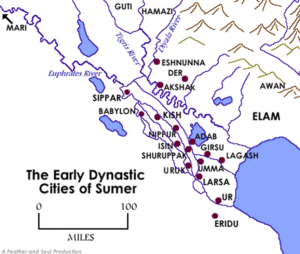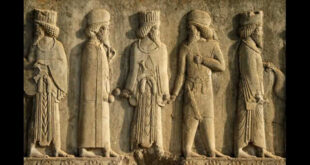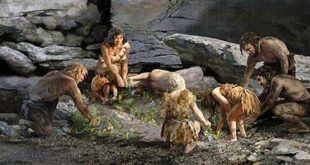The Legacy of Ur-Nammu
The Akkadian Empire had fallen to the Gutians and ancient Iraq was in chaos. Centuries of civilizations efforts were undone as cities were sacked, canals were abandoned and roads became impassable. Within a short time the regions infrastructure toppled under the weight of the Gutian invasion. For decades famine and strife gripped the land as fields remained empty of crops, canals became filled in by sediment and trade routes became overgrown. Finally after decades of Gutian occupation and pillaging a king (ensi) of Uruk named Utu-hegal was finally able to defeat the invaders and capture the Gutian king, Tiriqan. The remaining invaders, who had never been very great in number, moved northward to join the other tribes living in the hills of northern Iraq. This victory over the Gutians allowed the city of Uruk to once again take its place as the foremost city-state of Sumer and Akkad. Utu-hegal’s success however was short-lived. After only seven years as ruler of the Land he was replaced by his governor of Ur, the man known to history as Ur-Nammu.
Ur-Nammu may have been Utu-hegal’s son or son-in-law and it is not clear how he came to the throne. Some accounts indicate Ur-Nammu may have overthrown his sovereign but one text indicates that Utu-hegal’s “body was carried off by the river,” indicating the possibility of an accidental death.
Whatever the circumstances Ur-Nammu quickly assumed the titles King of Ur and Uruk as well as King of Sumer and Akkad, claiming himself to be the rightful heir to the widespread dominion of the Akkadian Kings. Interestingly he eventually dropped the title King of Uruk although he maintained sovereignty over the city. During his 17 year reign, which began ca. 2047 BCE, he is said to have “freed the land from thieves, robbers and rebels.” This would mark the end of a century of turmoil in southern Iraq. Furthermore, despite all the brutality of its inception and the totality of its downfall the lost Akkadian Empire was now revered as the imperial archetype, imposing legitimacy to all who emulated its form and practice. The most concrete example of this emulation was the continued usage of Akkadian as the official language of diplomacy and commerce.
A Diplomat and Religious Leader
Although his name translates to “Warrior of the goddess Nammu” Ur-Nammu is not believed to have waged war to as a primary means to gain territory. Instead of relying on armed might like the Akkadians he used a combination of diplomatic alliances and religious influence to steadily increase his power. The goddess Nammu is deemed to have been the mother of many of the elder gods, most notably of Enki whose city of Eridu was a close neighbor of Ur. By championing such a venerable mother-goddess Ur-Nammu was able to establish himself as an arbiter for disputes amongst the followers of the younger gods. This sacred pretense gave Ur-Nammu access to soft-power that he used most adroitly.
In one notable instance Ur-Nammu helped to negotiate disputes between the city-states of Girtab, Abiak, Marad, and Akshak all located to the north in Akkad. In the south his control was more absolute. He was the sovereign of Ur,
Eridu and Uruk and he built at Nippur, Larsa, Kish, Adab and Umma.

In Ur he followed the Akkadian practice and appointed his daughter Ennirgalanna as entu-priestess of the Moon god Nanna and built her a palace appropriate to her new station. In Uruk he appointed a son as en-priest of Inanna and yet another son, possibly his heir Shulgi, was married to a princess from distant Mari.
Ur-Nammu’s dynasty would be the third to rule southern Iraq from Ur and this epoch would be one of relative peace following nearly two centuries of the violent rule of first the Akkadian Empire and then the Gutians. The period of Ur’s third dynasty, known as Ur III, would mark a Sumerian cultural renaissance and during the time of Ur-Nammu’s heirs the dynasty would see all the lands of the Akkadian Empire united under the kings of Ur. A legal code once attributed to Ur-Nammu but now credited to his son Shulgi shows Ur’s third dynasty to be have been highly advanced in the art of civilization. Crimes that more recent codes would punish with death or mutilation were met with fines instead. This stable and unified Mesopotamian society led to a revitalized Sumerian literature that continued to use the prehistoric logogram language even though the powerful scribal bureaucracy had adopted the Akkadian cuneiform that was institutionalized under Sargon.
Ziggurat Builder
After expanding his control Ur-Nammu set about one of the most momentous building programs of all time when he erected ziggurats in Ur, Eridu, Uruk and Nippur. The massive stepped buildings made of mud bricks where built on the foundations of temple platforms that dated back to Ubaid times over 3,000 years earlier. These monuments are among the first known examples of the iconic structures and they have left marks on the landscapes of these sites to this day. Each of the magnificent tiered structures was topped by a shrine to the local god and Ur-Nammu as benefactor could assume the role of representative of them all.
In addition to the monumental construction Ur-Nammu rebuilt the canal networks that had fallen to ruin during the Gutian period. He also saw several cities refortified with new walls and defenses. Overall he sought to undo the damage of decades of neglect to a empire that he would claim as his own. Now, thousands of years later, sites all across southern Iraq contain bricks with the name of Ur-Nammu stamped on them commemorating the work of this enterprising dynastic founder.
The Stele of Ur-Nammu
Although a large trove of administrative documents does exist from this period there is little evidence of the actual details of Ur-Nammu’s reign. One notable exception is the Stele of Ur-Nammu. The stele was discovered in 1925 by a joint expedition of the University of Pennsylvania and the British Museum. The stele which had originally been ten feet high had been reduced to fragments. The largest fragments were later restored in Philadelphia with plaster being used to fill in the gaps. Dozens of smaller pieces were left in boxes but the visible relief provides several revealing scenes.
The top register shows Ur-Nammu offering libations to Nanna the Moon god of Ur on the right and to Nanna’s consort Ningal on the left. The second register shows Ur-Nammu on the right carrying tools over his shoulder as he prepares to rebuild a temple. On the left of the second register there are partial images of workmen and below them on the third register is a ladder presumably to scale the unfinished building. Although sparse, these images allow the earliest known glimpse into the dedication of a temple and give some idea of the rituals observed.
Ur-Nammu’s religious and diplomatic focus laid the foundations for an empire that would last over 100 years yet he himself would die at war, lost on a battlefield and abandoned “like a crushed vessel.” What battlefield it was remains a mystery but if the three Hurrian wars of his son Shulgi are any indication then it was likely in the northern hill country where the tribes of Kurdistan were always restive.
Although he met with an unfortunate end Ur-Nammu’s legacy was profound. The Akkadian language was firmly entrenched and the region had made a clear departure from the fractious politics of the city-states into a nascent kingdom. The legend of Sargon and the tragedy of Akkad had become part of the regions lore. The gods of ancient Sumer had been enshrined in new and massive monuments that would endure until this day. In all this Ur-Nammu choose to be remembered as a representative of the gods rather than as one himself providing us with a stark contrast to the legendary reign of the divine Akkadian ruler Naram-Sin. The end result is a sharp historical marker in the ancient conflict of ideals between men who would seek to join the gods and those content to serve them.
Sources
Roux, George, Ancient Iraq, (Penguin Books, London, 1966.)
Saggs, H.W.F. Babylonians, (University of California Press, Berkeley, 2000)
 History of Kurdistan
History of Kurdistan




